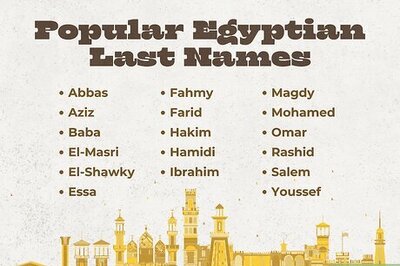
views
BANGALORE: A man is passionate about his new-born baby girl and chronicles her upbringing online; a lady executive at an MNC goes on maternity leave, but her passion for cooking spurs her to start a cookery blog; an artisan facing a tough time marketing traditional Tanjore paintings decides to shift his business online. The commonality in the three incidents: ‘The web is what you make of it’, the latest advertising campaign of Google Chrome, the Internet browser from the stables of the search engine behemoth Google.To get a feel of the relation between advertising and cinema personalities or cricket stars, one only needs to head to the nearest traffic junction characterised by a slew of billboards or turn on the television. By extension, exceptions to this rule in advertising are few and far in between. Which perhaps explains why Google’s decision to feature the lives of common people while making a pitch for itself comes as a whiff of fresh air. And it’s not just about making improvisations in advertising: The strategy has worked wonders for the company too. According to Nikhil Rungta, Country Marketing Head of Google India, the market share of the web browser in India has shot up by almost 200 per cent, from around 12 per cent in 2010 to its current share of 38 per cent. Rungta elucidates, “Google Chrome is a simple, secure and speedy browser. Similarly, the advertisements have a simple theme. They narrate real and compelling stories with emphasis on the emotional connect.”The campaign originated in the US, with a TV commercial a couple of years ago titled ‘Dear Sophie’. A man, overjoyed at having just become a father, opens a Gmail account for his daughter and records in it pictures and videos of her significant achievements as she grows up. The ad signs off with “Can’t wait to share all this with you one day.” The advert was an unprecedented success.On tailoring the campaign to the Indian context, he says: “One can achieve a lot with the Internet. For our campaign we short listed the success stories of Indians who have employed the internet to great effect that had universal appeal.” To buttress his point, Rungta cites the example of Archana and the numerous working women who go into sabbatical during their maternity period. “Our ads also focus on the specifics of our nation’s culture that include dying art forms such as Tanjore paintings (see box). This (the decision to narrate native tales) was a very conscious decision,” he adds.Five years ago, a similar campaign would have fallen flat in the country as online enterpreneurship was restricted only to the professional student community. What is ‘the web is what you make of it’?As the YouTube channel for the campaign puts it: “The web is simply part of our life and helps us get things done”. Personal HistoryG Rajendran, an artist and a dealer of Tanjore paintings, was featured in one of Google Chrome’s ‘the web is what you make of it’ advertisements. He shares with City Express the trials and tribulations in his business and his tryst with Google.For how long have you been in the business of marketing Tanjore paintings?I have been in the business for about twenty years.When and why did you shift your business online?Delayed payments and commissions to galleries were eating into our profits. This prompted us to make the transition to online in 2004, when we created the website www.Tanjoreoviyam.com. However, it was only after two years later were we able to get a better response with a much detailed website.Was the transition to online helpful to your business?Not entirely. We had to still make some compromises and offer lower prices for our wares. It was also a very slow process — to learn about technology and understand how to use it to our benefit.What was your first response when Google called on you? Were you skeptical?It came as a surprise to us. We were delighted. We were not all apprehensive, just happy that our art-form had received an authentication of sorts. Hailing from a remote village in Tamil Nadu, I was happy that I could at last make a lasting and positive impact.How has the advertisement affected your business?Post-filming of the commercial, our business has improved a lot. The traffic to our website, too, has increased. Though I may not be able to provide any statistics, for about 20 days after the advertisements were released, we were receiving around 50 mails daily. Above all, only those interested in Tanjore paintings visit our website, which is very heartening.



















Comments
0 comment